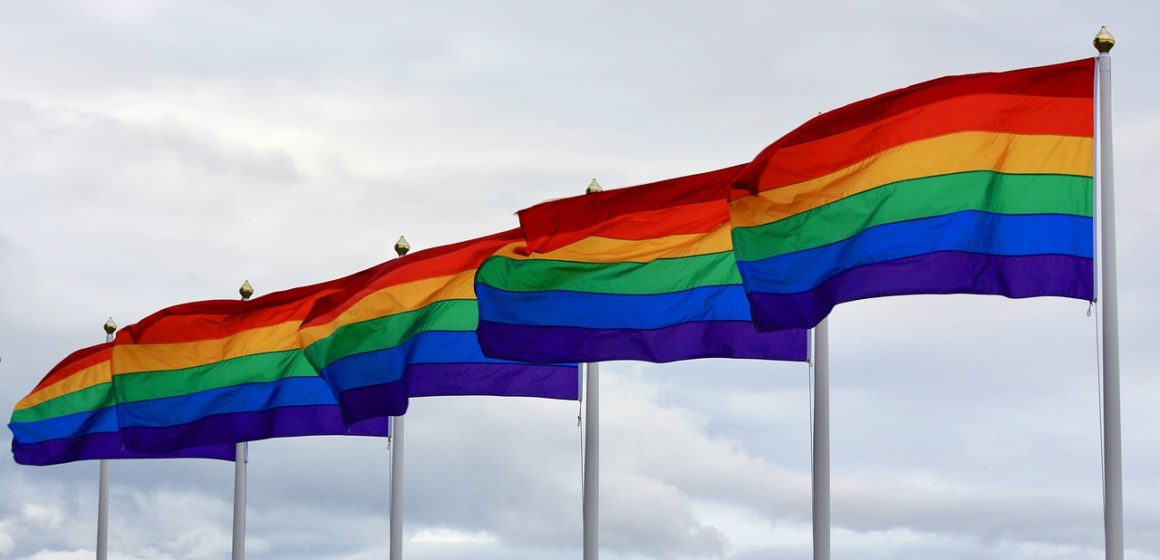In 2021, the newest fad in mainstream queer politics was the raising of the “progress” rainbow flag, which incorporates black and brown lines for people of color and pink, light blue and white lines for transgender people.
San Francisco had a bit of a harder time with this change, being the birthplace of the original rainbow flag. But the entire debate was moot by the end of June when the “progress” flag became outdated with the release of the “new” progress flag that includes a yellow triangle and a purple circle for the “intersex” community.
The mainstream LGBTQ+ movement has a very strange obsession with flags. Every subgroup within the LGBTQ+ umbrella has a flag, in part, because the original pride flag was incorrectly attributed to “gay” (male) pride, leaving many people feeling left out. Gay men actually have their own separate flag, and even “twinks” have a flag now.
The proliferation of flags is an illustration of much longer debate in the LGBTQ+ movement around categorization. Some in the community believe that every possible subgroup within the LGBTQ+ umbrella needs to be named, categorized and put in a box.
As a matter of individual self-determination and identity, finding a subgroup where you feel a perfect “fit” can be empowering, but as a matter of group dynamics and group-level political power, the proliferation of identities is problematic. As queer theorist Steven Seidman has noted, the project of categorizing ourselves merely “perpetuates the production of justices and social worlds organized and regulated by the heterosexual/homosexual binary.” In other words, creating more boxes doesn’t undermine the fact that all of those boxes are “othered” by the hegemony of heterosexuality.
Nonetheless, we have created an alphabet soup of “identities” that now fall under the LGBTQ+ umbrella, fostering counterproductive in-group power struggles. Gay men and lesbians have a longstanding debate over which letter comes first in the acronym (“G” or “L”). Then we debated the inclusion of bisexual, trans and queer people in the acronym. Today, we continue to disagree over how to include everyone else. LGBTQQIAAA was popular for a while, but now the addition of the “+” serves as a catch all, probably an unsatisfying decision for the folks in that box.
The ever evolving “progress flag” is simply a continuation of these old in-group debates. Instead of debating who gets to be included in the acronym, we’re debating who gets to be grafted onto the flag. And while we claim that these changes are about “inclusion,” each time we graft a subgroup flag onto the rainbow flag, we’re also making a statement about who has power and who we are comfortable excluding.
In “100 Years of Homosexuality,” David Halperin notes that these efforts to categorize ourselves have generally been associated with our oppression. His observations are borne out by history. In the 1920s, “queer” (middle class) gay men split from (effeminate) “fairies,” in the hopes of maintaining their class status, only to be purged from employment roles in the 1930s and 40s. In the 1950s, lesbians went their own way out of frustration that gay men were dominating the political agenda, only to be rejected by mainstream feminism two decades later.
The flag debates offer a modern illustration. Right now, with the federal government in Democratic hands, our community should be united in passing major pro-LGBTQ+ legislation. Instead, we’re focused on symbolic victories like which cities or counties are raising the pride flag. Except we can’t even seem to agree on branding, and so we’re focusing on symbolic victories ,such as the branding on the pride flag, within our symbolic victories—raising a pride flag.
Meanwhile, the Equality Act could be law tomorrow but for the Senate filibuster, and yet two Democratic senators, Joe Manchin and Kyrsten Sinema, are blocking filibuster reform. Let me say that again: the country’s first openly bisexual senator is currently blocking landmark LGBTQ+ legislation. LGBTQ+ people should be up in arms, but instead, we’re focused on flags. That is how our compulsion to categorize ourselves is distracting us, dividing us and contributing to our own oppression.
We as a community need to find a single political, group-level identity that works for all of us. That doesn’t mean we each individually have to self-identify a certain way, but it does mean we need to find an all-inclusive group label like “queer” or an all-inclusive group flag, like the rainbow flag was supposed to be, to get behind. Because the truth is our need to put ourselves in boxes and then fight about whose box sits where in the queer hierarchy is preventing us from obtaining the group-level political power we should have, and that’s preventing us from obtaining the equal rights we’ve been fighting for.
San José Spotlight columnist Michael Vargas is a business and securities lawyer and a part-time professor at Santa Clara University Law School. Vargas also chairs the American Bar Association’s committee on Business Law Education and serves on the executive board of the Santa Clara County Democratic Party, and on the boards of BAYMEC and the Rainbow Chamber of Commerce. His columns appear every second Thursday of the month.



Leave a Reply
You must be logged in to post a comment.